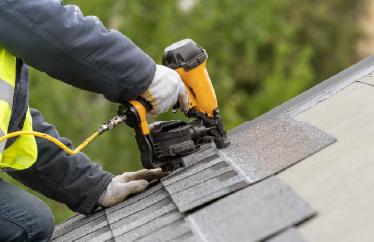Who doesn’t love to save money—especially when it comes to an essential cost like home insurance? Homeowners insurance can be expensive, especially if you live in an older home or an area that has a history of severe weather.
The good news is that you can apply discounts to your home insurance premium. After you check the Comprehensive Loss Underwriting Exchange (CLUE) report on your home and before you decide on a home insurance provider, learn more about what it takes to lower your homeowners insurance policy.
Here are 12 helpful tips.
1. Work on your credit score
A good credit score translates to a good insurance score. An insurance score is like a credit rating: it’s a numerical rating that tells providers how risky it is to cover your property. Your insurance score is calculated using your credit score, so by boosting your credit, you’ll also be raising your credit score.
2. Eliminate unnecessary coverage
Every home needs a different level of coverage. Just as you don’t want to file a claim and find out you’ve been underinsured, you also don’t want to spend money on coverage that isn’t critical. That’s why it’s important to assess your home insurance policy to find out what coverage is best for you. We always suggest talking to an insurance expert about what exactly your policy covers to ensure you have the proper coverage on your dream home.
3. Prioritize helpful home improvements
When you’re making home improvements, the first factor to consider is safety. Is your home in an area that experiences flash flooding every year, for example? Or maybe you have to worry about hail storms throughout the winter months.
Whatever the case, it’s crucial to take the proper steps to improve your home and stave off damage from common perils that will affect your home insurance premiums. Depending on your needs, you may want to invest in water barriers, gutter covers, or roof repairs.
4. Seek security
Modern home security systems are made up of a customizable range of integrated components that allow you to choose your level of security. Adding features like deadbolts, smart home security systems, and package lockboxes to your home may help reduce your home insurance premiums, but it’s a good idea to check with your local agent first.
5. Fight your flood risk
Flood damage is the likeliest insurance claim a homeowner will make in the U.S. Whether or not your dream home is located in a known flood zone, it’s smart to do your research on how best to outfit your home and property to reduce your home’s risk.
Would your home benefit from elevating your utilities or flood-proofing your landscaping, for example? Check in with your neighbors to ask what they’re doing and what they’ve been through in the past. If you live in an area with a high risk of flooding, talk to an insurance expert about adding flood insurance to your policy. A typical homeowners insurance policy doesn’t cover flood damage—and with the average flood repair costing an average of $30,000, you wouldn't want to be left out in the rain.
6. Get smart
Smart home devices, that is. Smart home devices like smart thermostats, leak/flood detectors, smart fire alarms and video doorbells are simple but effective devices to help proactively protect and care for your home. Because these devices are designed to preserve your home, your home insurance company will likely reward that proactivity.
7. Out with the old
Paying a demolition expert to cart away that old shed from behind your house might be a pain in the neck, it could end up saving you big bucks in the long run. Removing structures like dilapidated out-buildings or unused swimming pools is an often overlooked way to drop your home insurance premium. Eliminating them from your current policy will help lower your bottom line.
8. Question that next claim
Before you jump to open a claim, take a minute to assess the issue. Claims cause premiums to rise. Plus, depending on the carrier, you could face policy cancellation if your insurance provider determines that you’ve filed too many claims. To avoid stacking up your premiums, it’s helpful to know your deductible and consider what damage you’d be better off paying for out of pocket.
9. Consider dropping your land value
This is another possible step best taken while working with your insurance carrier. Review your policy with your agent to see just how much of your land is covered by your home insurance policy. More likely than not, you’ll use your homeowners insurance coverage more for your home’s structure, its contents and other structures on your property than the actual land itself. But again, check with your agent before eliminating coverage of your land.
10. Boost the deductible
If you have automobile insurance, you’re probably familiar with this method. Increasing your deductible can lower your premium fast, but the consequence is that you’ll have to pay much more out of pocket if and when you file a claim. As long as you’re realistic about what you’re able to afford if you need a critical repair, this is an easy discount to get.
11. Decide to stay or go
It’s critical to stay informed about what your home insurance company provides you with. Blindly renewing or slashing coverages to achieve the lowest rate can have significant, unforeseen consequences.
Before making any drastic changes, speak with an insurance professional you trust. Once you decide on the perfect level of coverage for your home, it's time to shop for new or existing policyholder discounts. After you factor discounts into your rate, you’ll be able to see which provider will save you the most money each year with the same amount of coverage.
New and existing policy discounts are among the most effective tools for lowering your rates without having to expend the effort to make changes to your home. Just be sure to check the ratings and reviews for every company to ensure they’re the right fit for you and your home.
12. Conduct an annual review
Just the thought of creating a home inventory—let alone reviewing it every year for accuracy—may have you running for the hills, but with home inventory apps and other tools, a complete home inventory isn’t nearly as complicated as it sounds.
Not only will a home inventory determine exactly how much personal property coverage is right for your home, but updating it every year could effectively lower your premium. You may have depreciating assets, for example, or realize you no longer possess an expensive item that you may still be paying to protect.
Finding the right provider
Shopping around for the perfect provider is imperative. When you build a relationship with your homeowners insurance company, they can help you look for discounts and eliminate unnecessary coverage. You’ll be able to ask if you get discounts for choosing automatic payments, insuring multiple properties or being part of an HOA. At Hippo, we try to offer our customers as many discounts as we can.
Discounts can go a long way, but you don’t ever want your dream home to be underinsured. With the right home insurance company, you won’t be.
Not a part of the Hippo family yet? Talk to one of our experts now, or get an instant quote in just 60 seconds.




